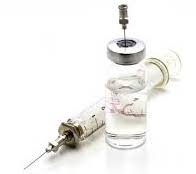Lipodissolve, also known as injection lipolysis, is a fat treatment method in which small deposits (usually .25 to .5ccs per injection) of a solution are placed immediately under the skin. (.5cm) When this solution comes into contact with fat, and it has a zone of diffusion of about 1 cm. from the injection site, a ‘fight’ takes place known as inflammation. This inflammatory reaction helps break down the walls of the fat cells allowing their stored fat to be released. While there is some debate as to what actually happens to fat that is released, it appears that it is removed by the bloodstream and carried to the liver where it is broken down and eliminated as waste products.

The key to getting a safe and effective outcome with LipoDissolve is one of limited dosing. Keeping injections for the body to less than 50 (total volume of 25 ccs) and in the neck to less than 15 (7.5cc) produces results that appear to have no side effects other than the temporary swelling which is an expected part of the treatment process. I have treated many neck and jowl areas successfully but will not use it for any other facial areas. The use of LipoDissolve injections into the fat pads of the lower eyelids, for example seems dangerous and does not produce a near similar result to what is achieved with the far safer and more predictable lower blepharoplasty procedure.
Dr. Barry Eppley
Indianapolis, Indiana


